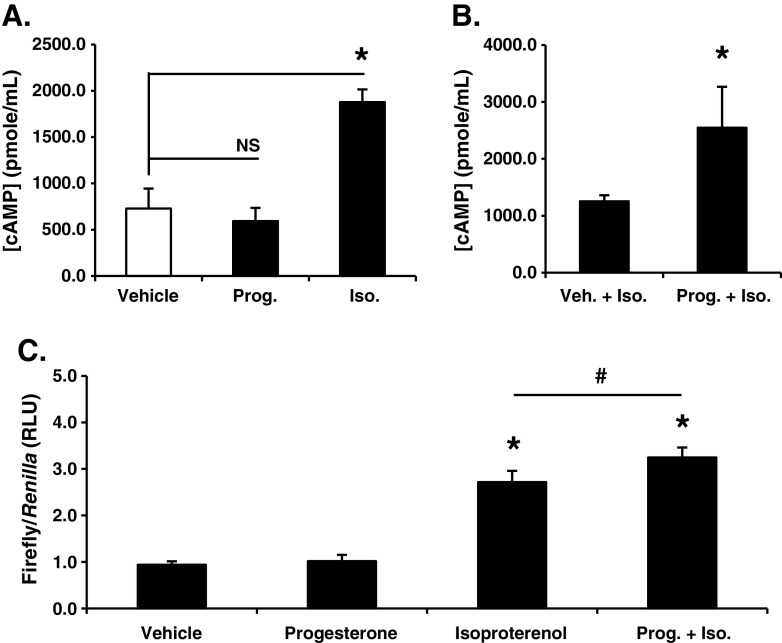Fig. 2.
Membrane progesterone receptor (mPR) activity enhances β1,2-adrenergic receptor stimulated cAMP levels and cAMP-mediated transcription. a Stimulating SKOV-3 cells with progesterone (Prog.; 1 μM) for 10 min did not alter cAMP levels relative to vehicle control. Treatment with the β1,2-adrenergic agonist isoproterenol (Iso.; 100 nM) served as a positive control for the cAMP EIA (mean ± SD, n = 4; NS, not significant; asterisk, p ≤ 0.05). b Co-treating SKOV-3 cells with progesterone (Prog.; 1 μM) for 10 min significantly increased cAMP induction by isoproterenol (Iso.; 100 nM; mean ± SD, n = 3; asterisk, p ≤ 0.05). c ES-2 cells transiently transfected with a CRE-luciferase reporter demonstrated a significant increase in transcription in the presence of isoproterenol (Iso.; 100 nM) but not progesterone (Prog.; 1 μM) when compared to vehicle treated cells (mean ± SD, n = 6; asterisk, p ≤ 0.05). CRE-luciferase expression was significantly increased when cells were treated with progesterone (Prog.; 1 μM) plus isoproterenol (Iso.; 100 nM) for 24 h versus cells exposed to isoproterenol alone (mean ± SD, n = 6; number sign p ≤ 0.05; all firefly luciferase values are individually normalized to the expression of a Renilla-based luciferase reporter construct serving as an internal control)

